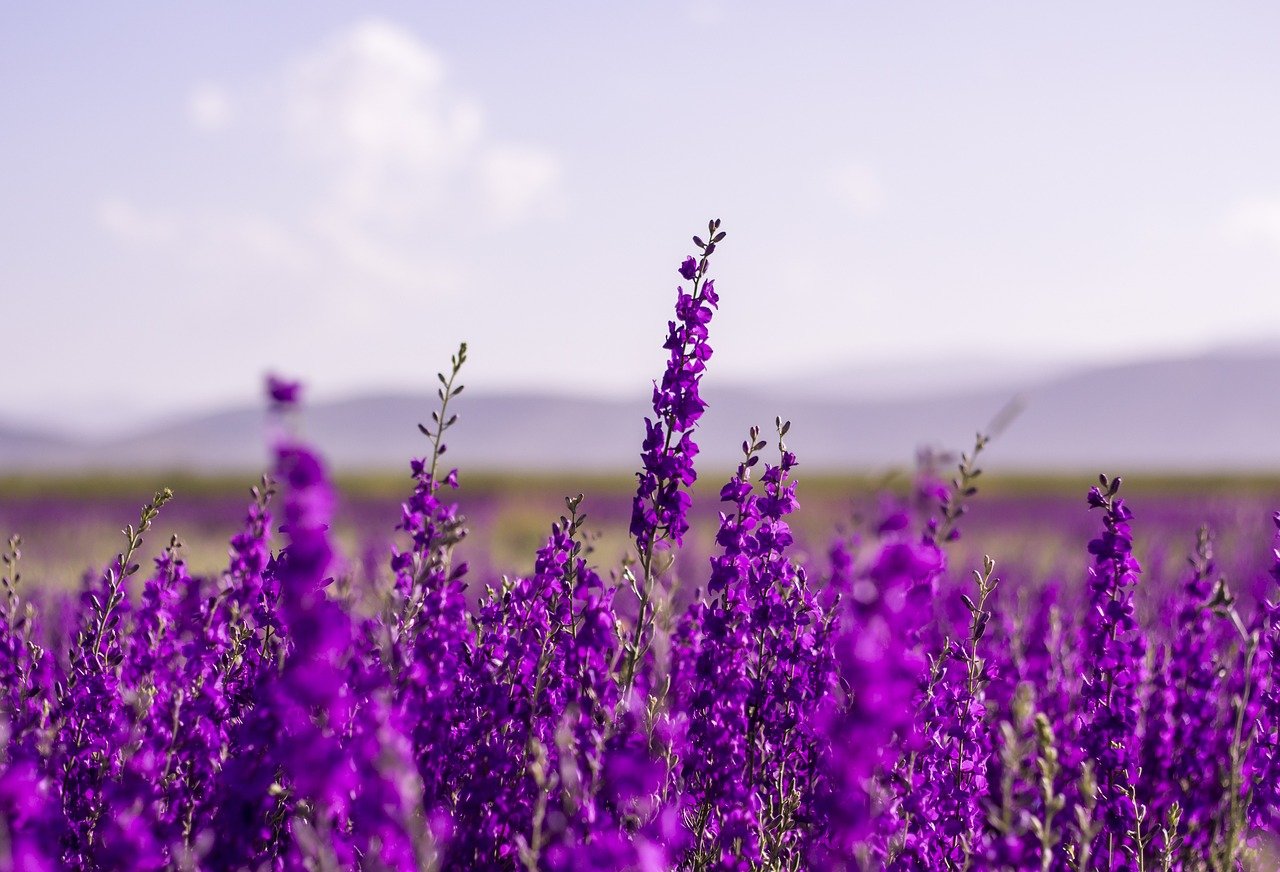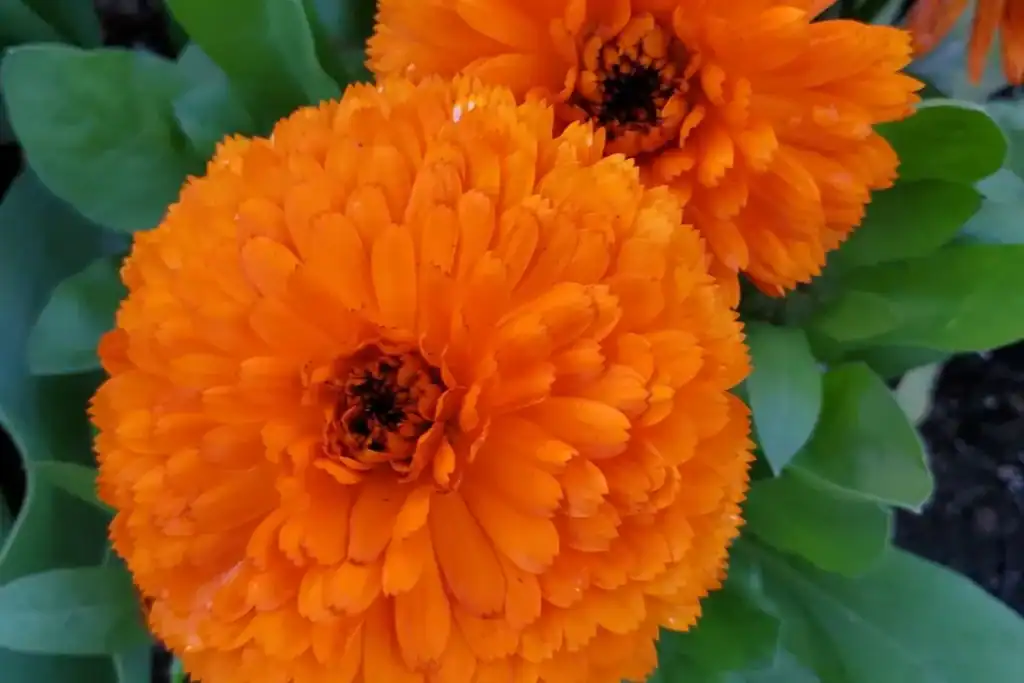9 Beautiful Plants That Naturally Repel Mosquitoes
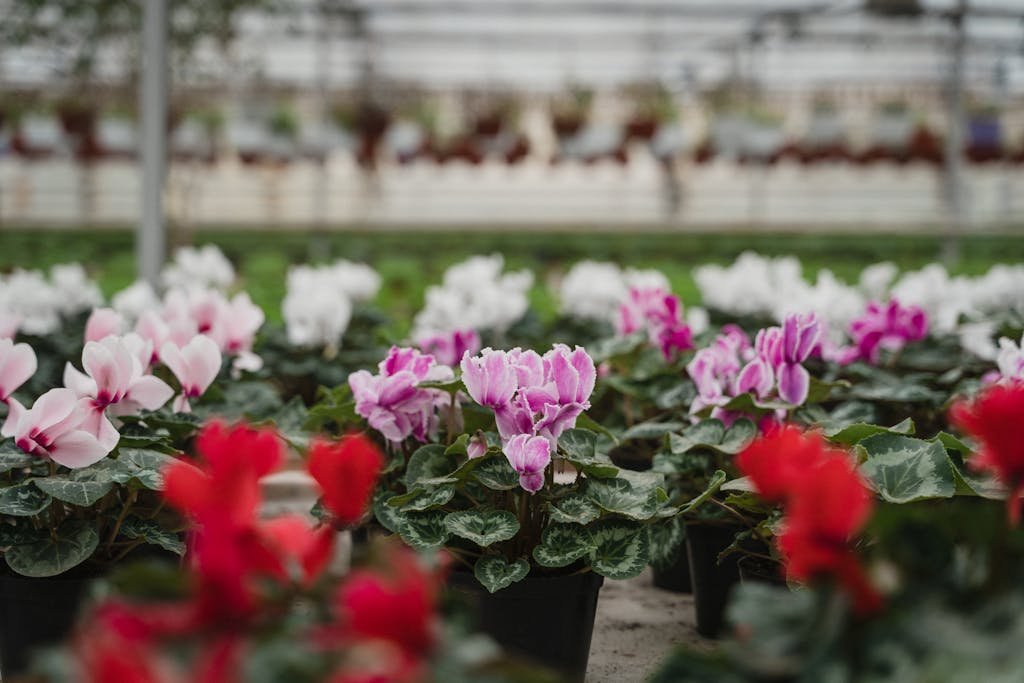
9 Beautiful Plants That Naturally Repel Mosquitoes (No Chemicals Needed)
Say goodbye to itchy bites and hello to a backyard that looks great and smells even better.
Disclosure: This post may contain affiliate links. If you click through and make a purchase, I may earn a small commission at no extra cost to you. As an Amazon Associate, I earn from qualifying purchases. Thank you for supporting My Stylish Backyard.
If you’re tired of swatting at mosquitoes every time you try to relax in your garden, you’re not alone. These uninvited guests can turn a peaceful evening into a scratchy nightmare. But before you reach for the bug spray, try this instead: grow your way to a bite-free backyard.
Mother Nature gave us plants that are not only beautiful but also naturally packed with mosquito-repelling properties. The best part? These plants fit perfectly into stylish patios, raised beds, and small container gardens — ideal for gardeners with limited mobility, arthritis, or those who simply want a low-effort way to enjoy their space.
Let’s dive into 9 stunning plants that pull double duty: they look great and keep mosquitoes at bay.
1. Marigold
2. Eucalyptus: A Statement Plant with Serious Repelling Power
If you want a plant that’s both elegant and effective, eucalyptus is your go-to. The scent is clean, crisp, and powerful — thanks to compounds like eucalyptol and geraniol, which confuse and repel mosquitoes.
Why It Works
- The aroma overpowers mosquito scent receptors.
- Commonly used in candles, sprays, and even soaps.
Easy-Care Tip:
Try dwarf eucalyptus in a large patio pot. Clip the leaves occasionally and hang small bundles to dry — they’ll still work to keep bugs away.
3. Catmint (Nepeta): Pretty, Fragrant, and Surprisingly Potent
Catmint isn’t just for your feline friends. It contains nepetalactone, a powerful mosquito deterrent that’s been found to be up to 10 times more effective than DEET in studies.
Why It Works
- Strong scent overwhelms mosquitoes’ navigation.
- Soft lavender flowers make it a garden showstopper.
Easy-Care Tip:
This hardy perennial is drought-tolerant and spreads gently — a great groundcover in raised beds or containers if bending is difficult.
👉 Get Catmint Plants or Seeds on Amazon
4. Mint: Fresh, Fragrant, and Ferocious on Mosquitoes
Mint may smell fresh to us, but to mosquitoes? It’s a scent they’ll flee from. The high menthol content in peppermint and spearmint varieties makes them powerful natural repellents.
Why It Works
- High menthol content is a natural insecticide.
- Menthol also masks body odour and CO₂ emissions.
Easy-Care Tip:
Mint is invasive in the ground — but thrives in pots. Keep it on a sunny patio table or near your door for easy bug control.
👉 Find Mint Starter Mix Plants
5. Lemongrass: The True Citronella Plant
Forget synthetic citronella candles. Lemongrass is the real deal. It’s packed with citral and geraniol, two natural oils that repel mosquitoes on contact.
Why It Works
- Geraniol interferes with mosquito movement and scent-tracking.
- Crushing the leaves intensifies the effect.
Easy-Care Tip:
Grow it in a large pot so you can move it around your patio as needed. Lemongrass loves heat and well-drained soil.
👉 Buy Live Lemongrass on Amazon
6. Lavender: Soothing to Us, Aggravating to Mosquitoes
While lavender calms us down, it does the opposite to mosquitoes. Its strong floral scent — rich in linalool — messes with their ability to detect human scent and carbon dioxide.
Why It Works
- Blocks mosquito receptors.
- Adds beauty, aroma, and pollinator appeal.
Easy-Care Tip:
Lavender does best in dry soil and full sun — perfect for a raised stone planter or rustic wooden trough.
7. Alliums: Bold Blooms, Bug-Free Benefits
Alliums (the ornamental relatives of onions and garlic) produce tall, globe-shaped flowers that not only look striking — they also deter mosquitoes and many garden pests.
Why It Works
- Sulphuric compounds in the leaves and bulbs irritate mosquitoes.
- Keeps away aphids and slugs too.
Easy-Care Tip:
Alliums are bulb plants — plant them once in autumn and they’ll pop up every spring with zero fuss. Ideal for hands-off gardeners.
8. Rosemary: Mediterranean Beauty with Mosquito-Fighting Fire
You’ve probably used rosemary in your cooking — but did you know it also repels mosquitoes? The oils in rosemary leaves (especially cineole and camphor) are naturally insecticidal.
Why It Works
- Burning rosemary in a firepit enhances the effect.
- Camphor-rich scent disrupts mosquito senses.
Easy-Care Tip:
Grow it in raised planters near your grill or BBQ area. It doubles as a culinary herb and mosquito bouncer.
9. Basil: Bold, Pungent, and Mosquito-Repellent
Basil’s spicy, sweet scent isn’t just for pasta dishes. It’s rich in eugenol and linalool, both of which repel mosquitoes — and even houseflies.
Why It Works
- Pungent oils mask human scents and irritate mosquitoes.
- Can be crushed and rubbed on skin (if you’re not sensitive).
Easy-Care Tip:
Try growing basil in waist-high containers or vertical planters to reduce bending. Keep it close to your outdoor dining space.
How to Maximize the Mosquito-Repelling Power of These Plants
These plants are strong on their own — but even better when used together. Here’s how to make the most of them:
1. Create a Fragrant Barrier
Line your garden seating area, patio, or walkway with a mix of mint, lavender, and catmint.
2. Use Containers for Flexibility
For those with limited mobility, keep mint, rosemary, and lemongrass in movable pots so you can cluster them where needed.
3. Combine with Natural DIYs
Use dried rosemary or lavender to make natural sachets, or burn rosemary in a fire-safe bowl during summer evenings.
✅ Ready to Repel Mosquitoes Naturally?
These 9 plants don’t just look good — they do serious work protecting your garden. Whether you’re designing a stylish backyard or simply trying to enjoy the evening air without getting eaten alive, these are easy wins.
And best of all? They’re eco-friendly, pet-safe, and perfect for low-effort, high-style gardening.
🌟 Free Download: “10 Natural Ways to Keep Mosquitoes Out of Your Garden”
Want even more chemical-free tips? Download my free guide packed with extra tricks to keep your outdoor space pest-free — including DIY sprays, placement hacks, and natural oils.
🛒 Shop the Plants
Need a shortcut? Here’s a curated list of mosquito-repellent plants and accessories available on Amazon:
✅ Marigold Seeds
✅ Eucalyptus Starter Plant
✅ Catmint Seeds
✅ Peppermint Plant
✅ Lemongrass Live Plant
✅ Lavender Plants
✅ Allium Bulbs
✅ Rosemary Potted Plant
✅ Basil Starter Plants
As an Amazon Associate, I earn from qualifying purchases. Your support helps keep this garden running
9 Mosquito-Repellent Plants (and Why They Work)
Introduction
Let’s be honest: mosquitoes are annoying. Not only do their bites leave you itchy and irritated, but they can also carry serious diseases like West Nile virus, dengue, and malaria. If you live in a humid or tropical area, you know that these pesky insects can make your evenings on the porch or afternoons in the garden unbearable. While chemical repellents are often effective, many people are looking for safer, more natural alternatives. That’s where mosquito-repellent plants come into the picture.
These plants don’t just sit pretty in your garden—they actively help repel mosquitoes through the oils, fragrances, or chemicals they naturally produce. Most of these oils, such as citronellal, linalool, and geraniol, interfere with mosquitoes’ ability to detect carbon dioxide and other scents that attract them to humans.
Benefits of using mosquito-repellent plants over chemical repellents
Why choose plants over sprays and coils? For starters, they’re safe. Unlike DEET-based products, which can irritate the skin or even be toxic in large amounts, plants are a chemical-free option. They’re also multifunctional—offering aesthetic value, culinary uses, and even air purification in some cases. Plus, they’re environmentally friendly. No plastic bottles, no aerosol sprays—just green, living solutions that make your home more beautiful and more livable.
In this article, we’ll explore nine of the most effective mosquito-repellent plants and break down exactly how and why they work. Whether you’re planning a garden makeover or just want fewer bites on your next BBQ night, this guide is packed with everything you need to know.
1. Citronella – The Classic Natural Repellent
What is Citronella?
Citronella is perhaps the most well-known plant when it comes to repelling mosquitoes. Often referred to as the “anti-mosquito” plant, citronella is a clumping grass that can grow up to 5–6 feet tall in the right conditions. It’s native to Asia and closely related to lemongrass, but with a more intense lemony fragrance. Its powerful scent masks the smells that mosquitoes find irresistible—like carbon dioxide and human body odors—essentially confusing them and sending them elsewhere.
Why Citronella Works Against Mosquitoes
The active components in citronella oil—namely citronellal, geraniol, and limonene—are proven to repel mosquitoes. These components disrupt the insect’s nervous system and make it difficult for them to locate their prey. Unlike synthetic sprays, citronella doesn’t kill mosquitoes; it just convinces them that you’re not worth the trouble.
Scientific studies show that citronella oil provides about two hours of protection, which might not sound like much, but it’s enough to cover a short garden party or evening walk. Planting citronella in your garden or potting it near your windows can act as a natural bug barrier.
Want to make it work even better? Crush the leaves slightly when you’re near them. This releases the oils into the air, boosting its repellent power. You can also use fresh citronella leaves in DIY sprays or essential oil diffusers indoors. Just be cautious with pets—citronella can be mildly toxic to cats and dogs if ingested.
Best Ways to Grow and Use It at Home
Citronella thrives in warm climates and full sun. It can be planted in the ground or kept in large pots if you’re in a cooler region. Make sure the soil is well-drained and slightly acidic. Regular trimming helps the plant maintain its shape and releases more of its mosquito-repelling oils.
2. Lavender – The Soothing Scent That Bugs Hate
Introduction to Lavender
Lavender might be your go-to for sleep and stress relief, but did you know it also keeps mosquitoes at bay? This fragrant flowering plant is a double-duty powerhouse: beautiful to look at, therapeutic to smell, and highly effective at repelling insects. Lavender belongs to the mint family and is native to the Mediterranean, but it’s now cultivated worldwide.
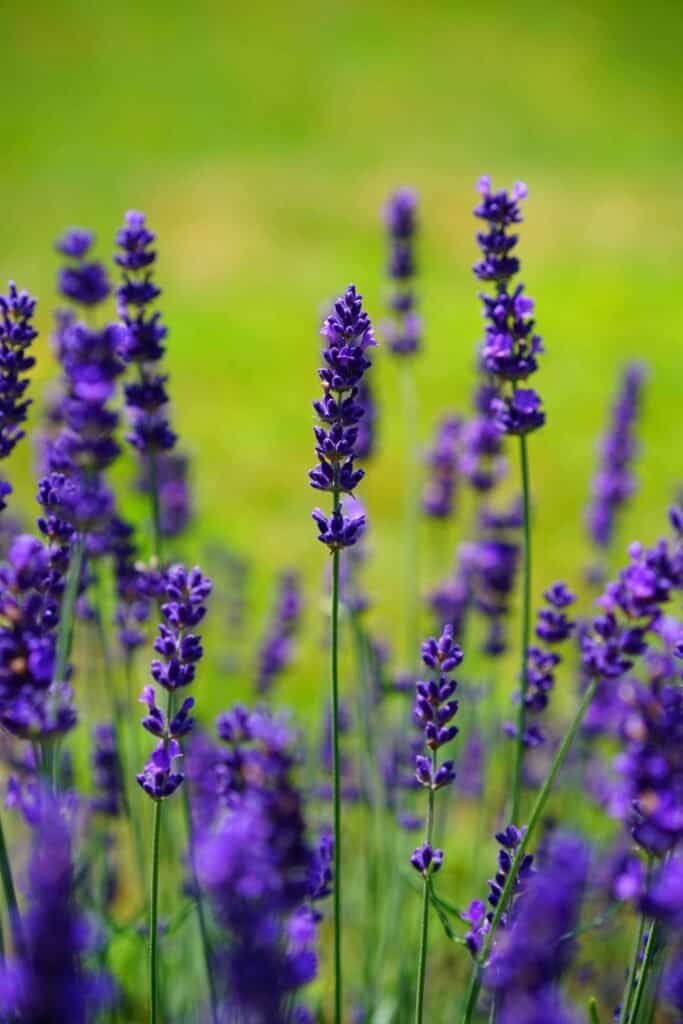
How Lavender Repels Mosquitoes Lavender contains linalool and camphor—two natural compounds that are highly unpleasant to mosquitoes. While the smell is relaxing to us, it overloads a mosquito’s olfactory system, acting like a natural off-switch to their sense of direction. Studies have shown that lavender oil can be as effective as DEET in low concentrations, especially when applied topically or diffused in the air.
Crushing lavender flowers or leaves releases these essential oils into the air, increasing its mosquito-repellent power. Lavender’s anti-inflammatory properties also make it a soothing balm for existing bites, reducing redness and itching.
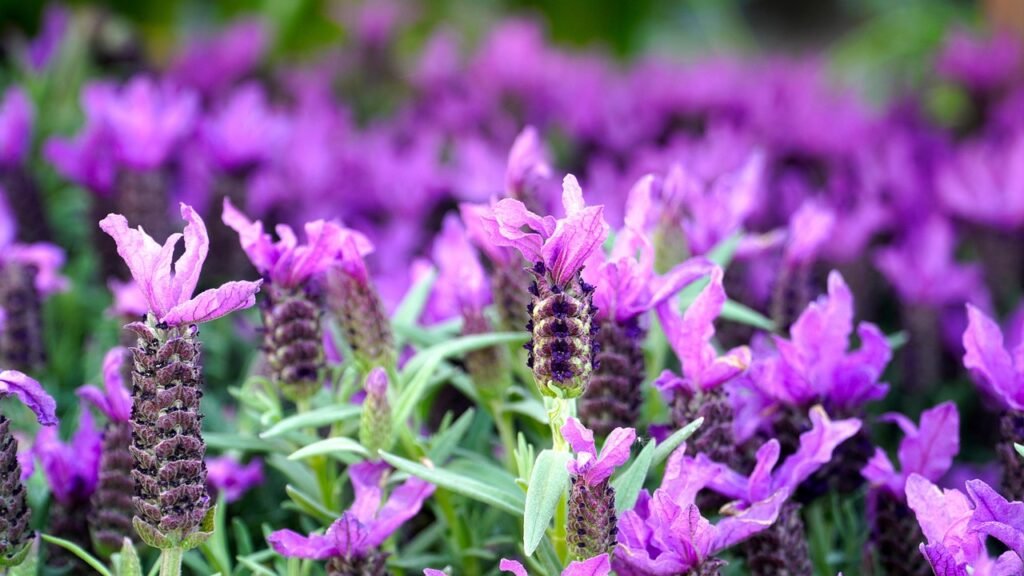
Ideal Placement for Maximum Effect Lavender loves sunlight—at least 6 to 8 hours a day—so it’s perfect for garden borders, walkways, or sunny balconies. The plant thrives in well-drained, sandy soil and prefers to be watered deeply but infrequently.
To repel mosquitoes indoors, place potted lavender near windows or entryways. You can also hang dried lavender bouquets in your closet or bedroom for both scent and insect control. Lavender sachets under your pillow or in drawers keep mosquitoes—and moths—at bay. The best part? It’s a beautiful and aromatic addition to any space.
3. Marigolds – Bright, Beautiful, and Bug-Repelling
What Makes Marigolds a Natural Repellent?
Marigolds aren’t just cheerful flowers that brighten up any garden—they’re also little bug-fighting machines. These hardy annuals produce a compound called pyrethrin, which is a common ingredient in natural insecticides. Pyrethrin affects the mosquito’s nervous system and deters them from coming close. It’s one of the reasons marigolds are often found lining vegetable gardens—to keep pests away from produce.
Marigolds emit a strong scent that mosquitoes, aphids, and even rabbits dislike. This smell, although pleasant to most humans, acts like a flashing red sign telling bugs to back off.
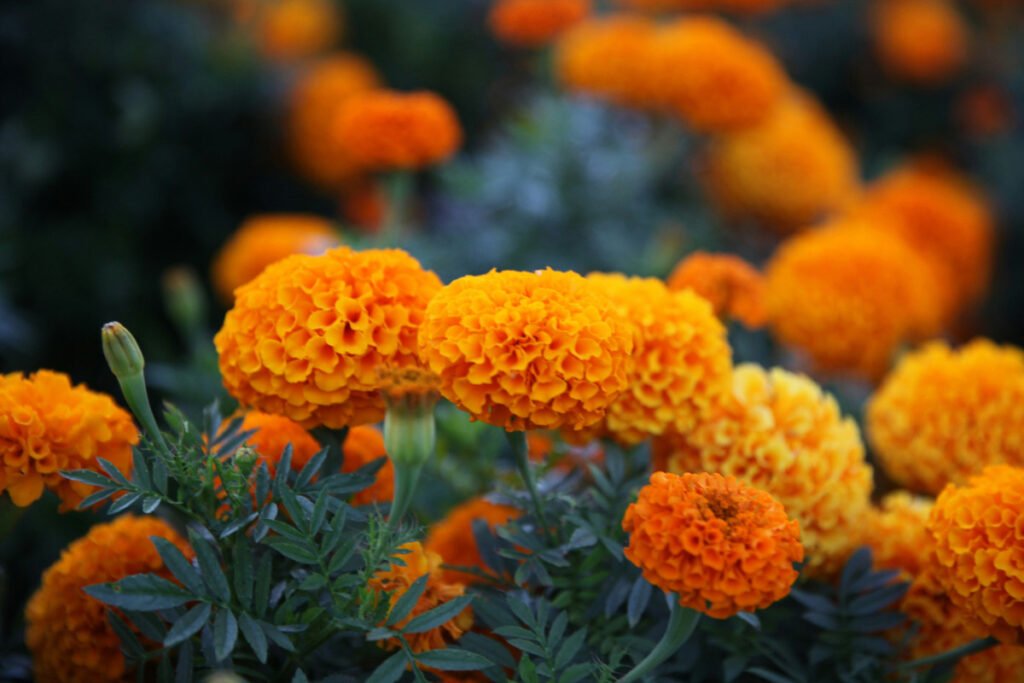
Where and How to Plant Marigolds Marigolds are incredibly easy to grow. They thrive in full sun and are not picky about soil types, making them ideal for beginner gardeners. They can be grown from seeds or young plants and start blooming within just a few weeks. These plants also tolerate drought and heat well, making them a perfect option for summer gardens.
Plant marigolds around seating areas, garden edges, or near doorways to create a colorful and fragrant bug barrier. They do well in pots, window boxes, or directly in the ground. The more, the merrier!
Other Pests Marigolds Help Deter Besides mosquitoes, marigolds are known to repel a variety of garden pests including:
Aphids
Whiteflies
Squash bugs
Nematodes
If you grow vegetables or herbs, consider planting marigolds nearby to protect your crops naturally. Their bold yellow and orange hues also make them a striking visual contrast in any landscape design.
4. Basil – Not Just for Cooking!
The Science Behind Basil’s Repellent Power
Most people love basil for its sweet, spicy flavor that brings life to dishes like pesto and pizza—but mosquitoes hate it. Basil contains compounds like estragole, linalool, and eugenol—each of which contributes to its strong aroma and natural mosquito-repelling properties. Research shows that basil essential oil can kill mosquito larvae and repel adult mosquitoes effectively.

Unlike some other plants, basil doesn’t need to be crushed to release its oils—just being near it is often enough. The scent is strong and distinct, and that’s exactly what makes it effective against mosquitoes.
Best Basil Varieties for Mosquito Control While all basil varieties have some level of repellent properties, the following are especially potent:
Lemon Basil – has a citrus scent that adds an extra layer of mosquito defense
Cinnamon Basil – with higher concentrations of cinnamate compounds
Holy Basil (Tulsi) – revered in India, it’s both spiritual and functional
These varieties are also excellent culinary herbs, making them dual-purpose for the kitchen and garden.
How to Care for Basil Indoors and Outdoors Basil thrives in warm weather and well-drained soil. It needs plenty of sun—6 to 8 hours daily—and regular watering. Be sure to pinch off the flowers as they appear to keep the plant focused on leaf production, which increases the potency of the oils.
You can plant basil in garden beds, patio pots, or even in kitchen windowsills. A few basil plants around your outdoor dining area can make a huge difference in your evening comfort. Indoors, just make sure the plant gets enough light, and enjoy the aroma every time you cook or walk past.
5. Peppermint – Freshness with a Bite
Why Mosquitoes Steer Clear of Peppermint
Peppermint isn’t just for gum or mojitos—it’s a fierce mosquito repellent too. This plant is loaded with menthol, a cooling compound that disrupts a mosquito’s scent receptors. The intense smell of peppermint masks the carbon dioxide and body odor that usually attract mosquitoes, making you effectively invisible to them.
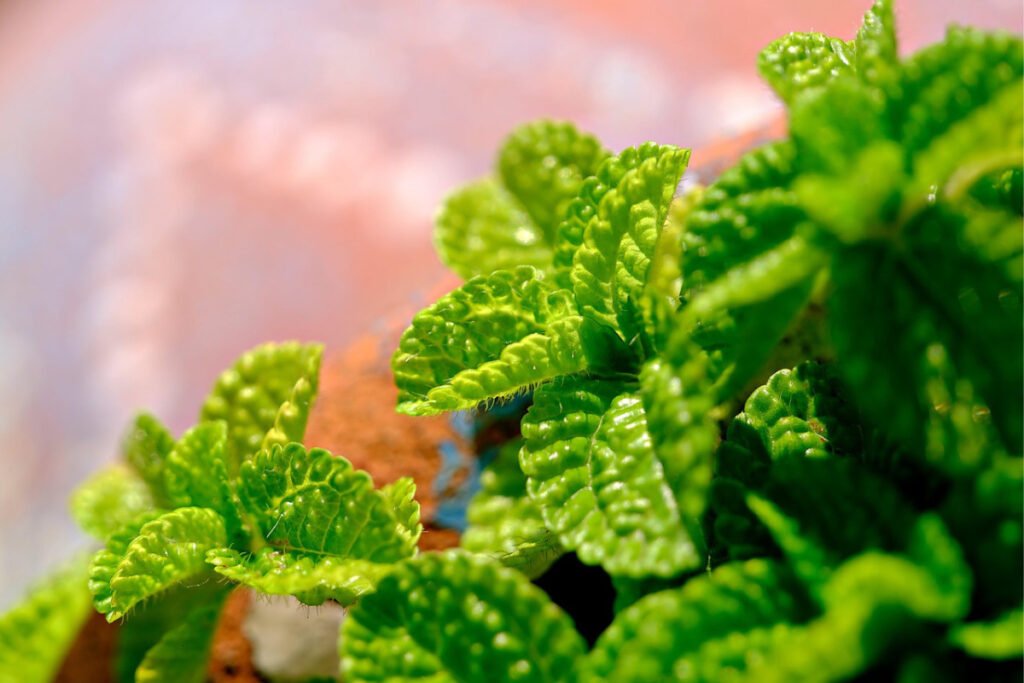
Peppermint oil has been shown in studies to repel mosquito species for up to two hours when applied to the skin. Its high menthol content not only repels mosquitoes but also provides relief from itchy bites thanks to its natural cooling effect.
Creative Ways to Use Peppermint Around Your Home
There are endless ways to incorporate peppermint into your anti-mosquito strategy:
Grow it in small pots near doorways, windows, or seating areas.
Crush the leaves and rub them on exposed skin (patch test first).
Steep the leaves in hot water, cool the liquid, and spray it around your home.
Add a few drops of peppermint essential oil to diffusers, lotions, or homemade sprays.
Another bonus? It smells fresh and invigorating—a natural air freshener and bug bouncer in one!
Bonus: Other Bugs It Repels Peppermint doesn’t stop at mosquitoes. It also repels:
Ants
Spiders
Flies
Fleas
Whether you’re trying to enjoy a meal outdoors or just want fewer creepy crawlies around the house, peppermint is your plant ally.
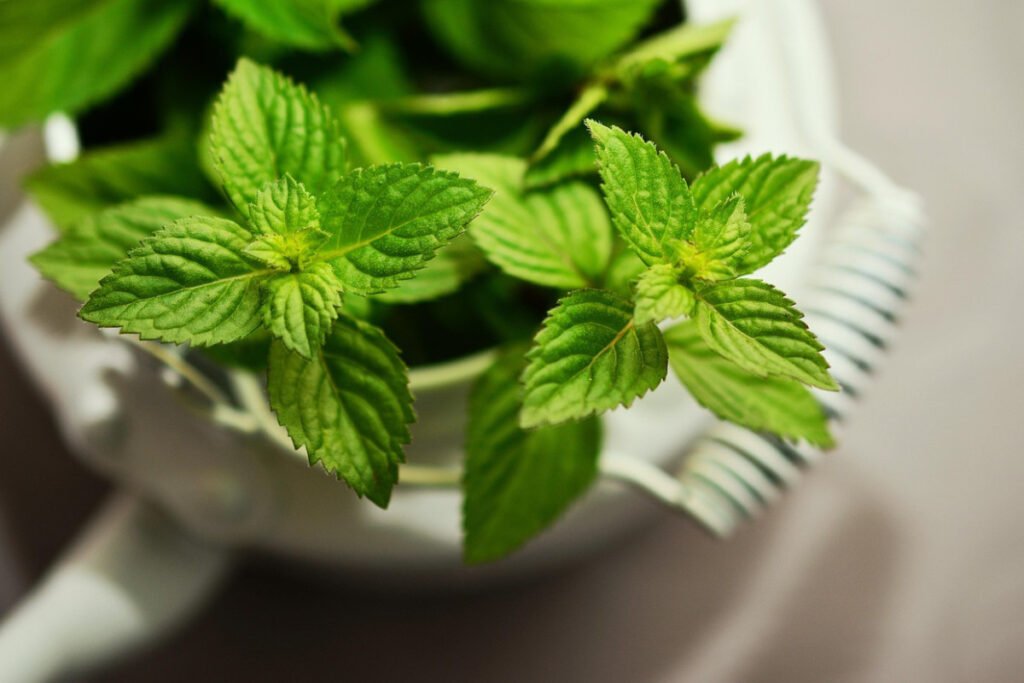
6. Lemongrass – Fragrant and Functional
The Power of Citral in Lemongrass
Lemongrass is a tall, tropical grass known for its bright citrusy aroma and flavor, but it’s also one of the most powerful natural mosquito repellents. What makes it effective? It contains a compound called citral, which has strong insect-repelling properties. In fact, citral is a key ingredient found in citronella oil—one of the most common ingredients in natural mosquito repellents.
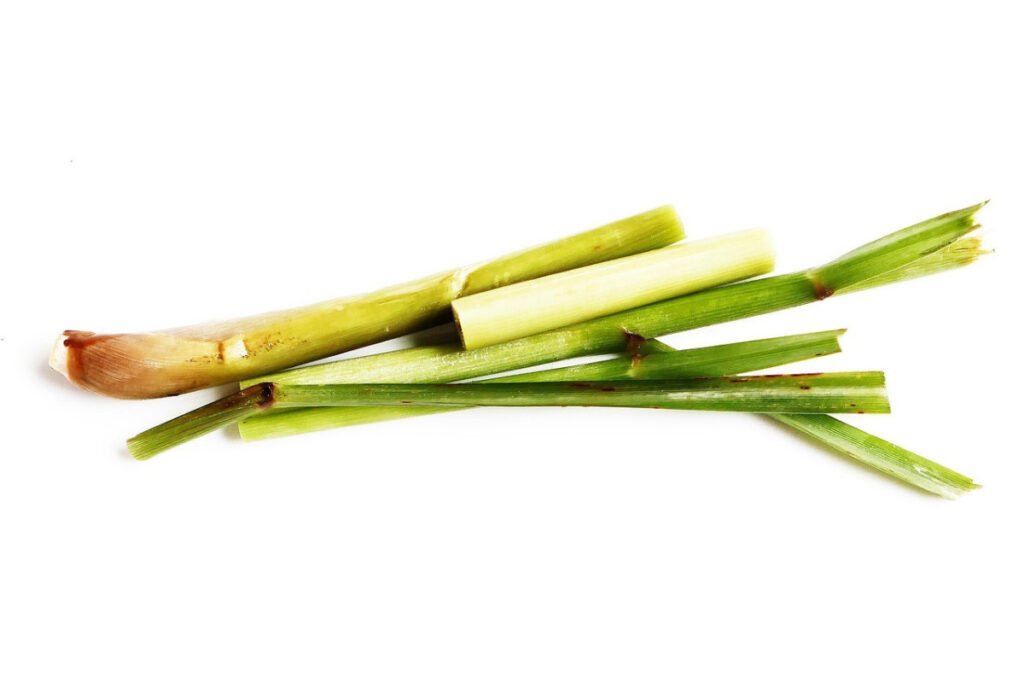
When mosquitoes smell citral, it interferes with their ability to detect the carbon dioxide and body heat that humans emit. This confusion causes them to fly away rather than land and bite. Lemongrass doesn’t kill mosquitoes, but it does an excellent job of making the area around it less appealing for them.
Growing Lemongrass at Home Lemongrass grows well in full sunlight and warm temperatures. It thrives in zones 9 through 11 but can also be grown in containers in cooler climates. Make sure to use well-drained soil and water it regularly without overwatering. Once it’s established, it’s relatively low-maintenance and grows rapidly, often reaching 3 to 4 feet tall.
If you’re growing it in pots, make sure the container is large enough to support its root system. Bring it indoors during winter to keep it alive in colder areas. Lemongrass also benefits from regular trimming, which keeps it compact and encourages fresh growth.
Using Lemongrass to Deter Mosquitoes To maximize its mosquito-repelling power, plant lemongrass near outdoor seating areas, entrances, or patios. You can also crush the leaves and rub them lightly on your skin, though you should always test for skin sensitivity first. Another great use is to make a simple spray by boiling the leaves in water and mixing the solution with witch hazel or rubbing alcohol. Keep it in a spray bottle for quick use during outdoor activities.
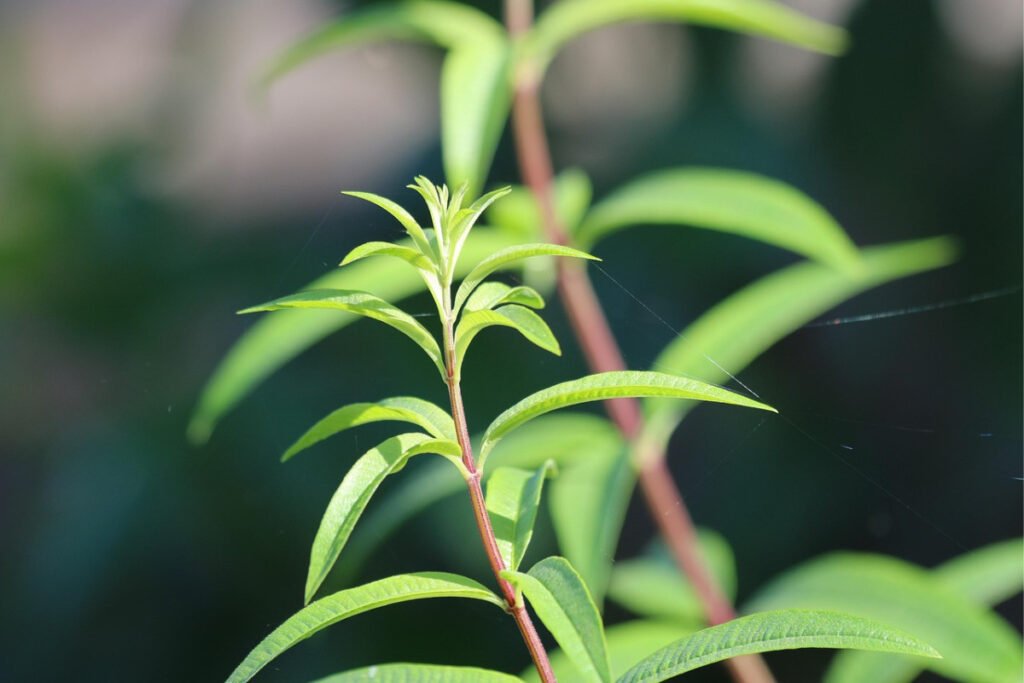
Lemongrass not only keeps mosquitoes away—it smells amazing and adds a lush, tropical feel to any garden.
7. Catnip – A Surprising Mosquito Fighter
Nepetalactone – The Secret Weapon
Catnip, also known as Nepeta cataria, might be best known for its effects on cats, but it’s surprisingly effective at repelling mosquitoes. The magic lies in nepetalactone, a compound that’s been shown to be up to 10 times more effective than DEET in some studies. This compound overwhelms mosquitoes’ sense of smell, causing them to avoid areas where catnip is present.
What’s especially interesting is that nepetalactone is released both through the leaves and the stem of the catnip plant, making the whole plant a powerhouse of pest protection.
How to Grow Catnip for Mosquito Control Catnip is a hardy perennial that can be grown easily in most gardens. It thrives in full sunlight and well-drained soil. It’s drought-resistant, low maintenance, and can grow in containers or directly in the ground. Just be warned—it spreads quickly and can take over your garden if not managed.
To control its growth, consider planting catnip in pots or using garden edging. Trim it regularly to encourage new leaf production, which increases the amount of nepetalactone the plant emits.
Smart Ways to Use Catnip Place pots of catnip near windows, porches, patios, or any high-traffic outdoor areas. You can also dry the leaves and make herbal sachets to place around your home. Another great use is to steep the leaves in boiling water, let it cool, and use the liquid as a homemade spray. Just remember: this plant is a magnet for cats, so don’t be surprised if a few neighborhood felines start hanging around.
While you’re protecting yourself from mosquitoes, your cat will thank you too!
8. Rosemary – A Mediterranean Marvel Against Mosquitoes
More Than a Kitchen Herb
Rosemary is beloved in the kitchen for its strong, pine-like aroma and flavor—but it’s also a potent mosquito deterrent. This evergreen shrub produces a woody fragrance that’s unappealing to many insects, especially mosquitoes. The key compounds at work here are cineole, camphor, and pinene, all of which mess with mosquitoes’ ability to detect hosts.
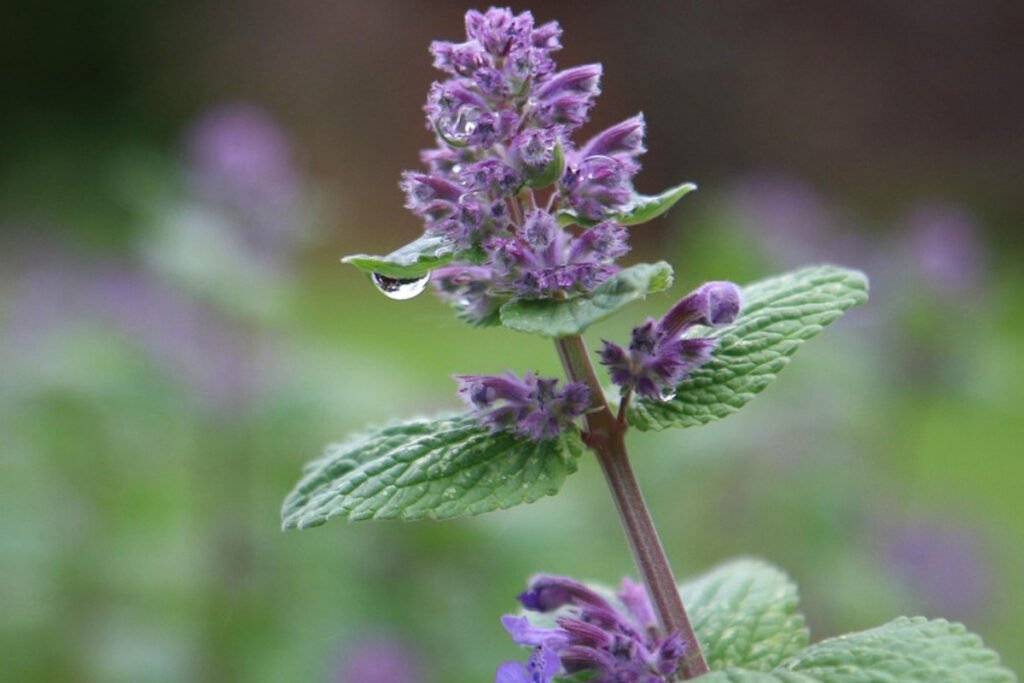
What’s more, burning rosemary leaves releases these oils into the air, making it one of the best herbs to toss onto the grill or fire pit when dining outdoors.
Growing Tips for Rosemary Lovers Rosemary thrives in hot, dry climates and doesn’t require much water once established. It prefers well-draining, sandy soil and lots of sunlight—at least 6 hours per day. This makes it ideal for Mediterranean-style gardens or container gardening.
Indoors, rosemary needs a sunny window or a grow light to stay healthy. Let the soil dry between waterings to avoid root rot. With proper care, it can grow into a beautiful bush that’s both ornamental and functional.
Functional Uses Beyond Cooking In addition to seasoning your meals, rosemary makes a great natural mosquito repellent when planted around outdoor spaces. Position it near doors, patios, and windows to keep bugs at bay. Crush a few sprigs and rub them on your arms and legs for a quick natural solution—just be sure to patch test if you have sensitive skin.
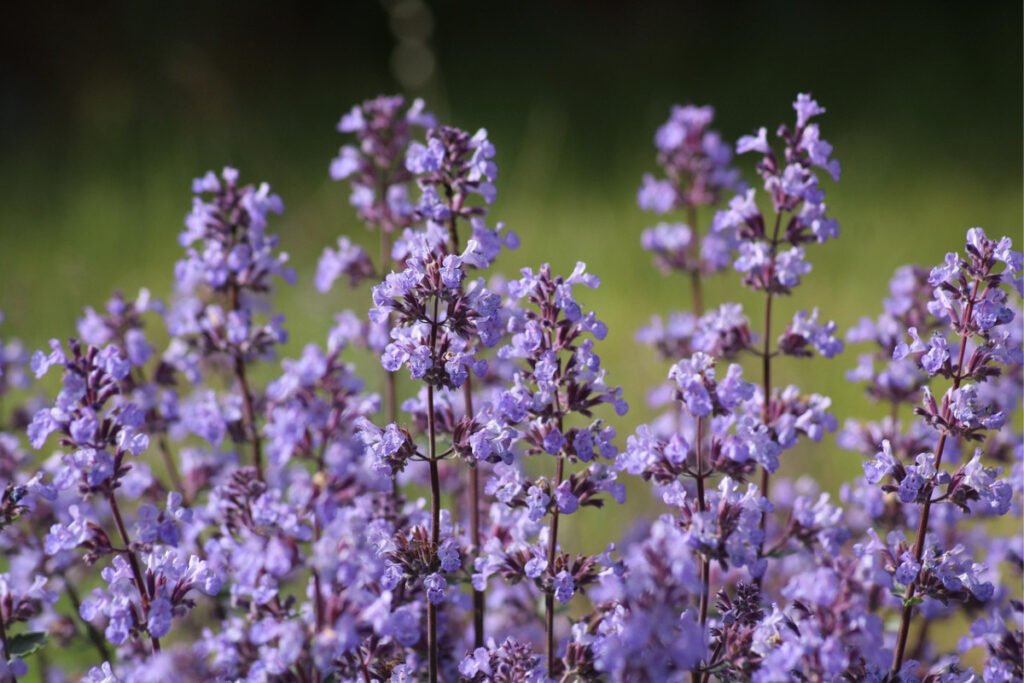
You can also make rosemary tea, let it cool, and use it as a spray. Or simply enjoy the scent by placing rosemary-infused sachets around your home. It’s a fragrant, multifunctional herb with impressive insect-repelling powers.
9. Geraniums – Beauty with a Bug-Repelling Bonus
Scented Varieties Are Key
Geraniums are not only stunning with their vibrant blooms and lush green leaves, but they can also help in your battle against mosquitoes—particularly scented geraniums. These are different from regular flowering varieties and are often infused with citronella-like scents that confuse and repel mosquitoes.
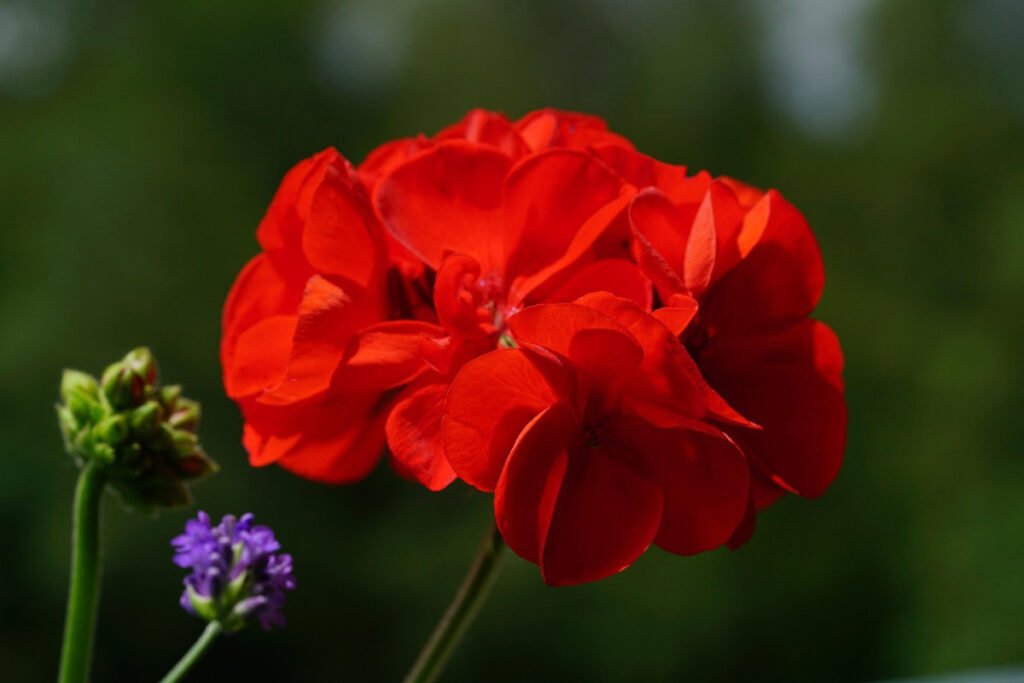
The citronella-scented geranium is especially powerful. It contains similar aromatic oils found in lemongrass and citronella grass, making it an effective barrier plant.
Planting and Caring for Geraniums Scented geraniums thrive in sunny locations and well-drained soil. They’re drought-tolerant and grow well in pots, which makes them perfect for patios, balconies, or window boxes. Deadheading spent flowers encourages new blooms, while occasional pruning helps them maintain shape and maximize aroma.
These plants do not tolerate frost well, so if you’re in a colder climate, bring them indoors during the winter or treat them as annuals.
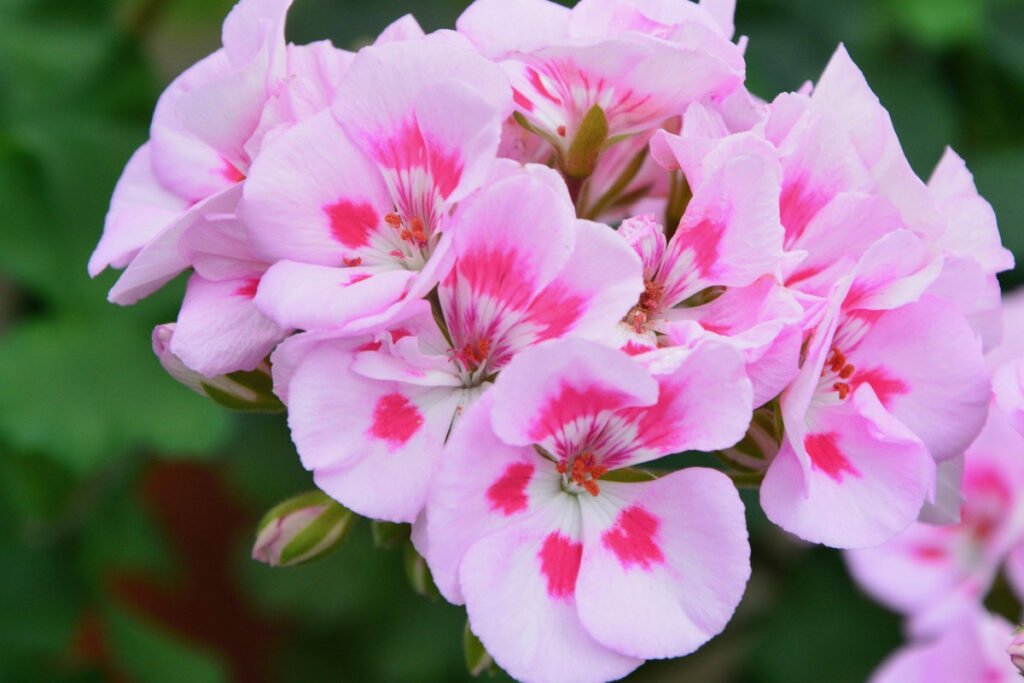
Where and How to Use Them Place pots of scented geraniums near your front door, outdoor seating areas, or windowsills. Crush the leaves gently to release the oils into the air and enhance their mosquito-repelling effect. You can also dry the leaves and use them in potpourri or herbal pillows.
Not only do they protect you from bites, but they also add bursts of color and texture to your landscape. A truly beautiful way to defend your home.
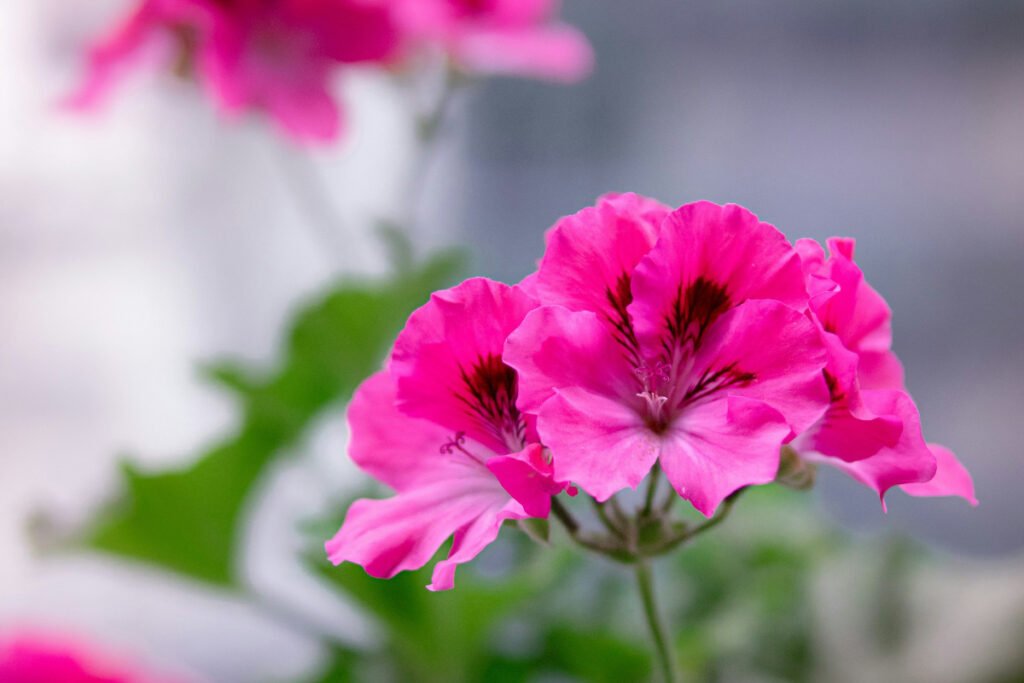
10. Bonus Tips: Maximizing the Impact of Mosquito-Repellent Plants
Group Planting for Stronger Defense
Plants are stronger together—especially when it comes to repelling mosquitoes. By grouping different repellent plants in one area, you create a powerful scent wall that’s more effective than any single plant on its own. This is known as companion planting. For example, place citronella, lavender, and peppermint together near your seating area to boost protection. Think of it like forming a botanical army—each plant with its own weapon against pests.
Combine with Other Natural Methods Plants are fantastic, but they work best when part of a larger mosquito-fighting plan. Try combining your plant-based strategy with other natural methods, such as:
Removing standing water from gutters, pots, and birdbaths to prevent breeding.
Using fans on patios—mosquitoes are weak fliers.
Burning natural herbs like sage or rosemary for added scent protection.
Installing mosquito netting for vulnerable areas like balconies or garden gazebos.
Together, these steps create a safer, more comfortable space for you and your family to enjoy.
11. The Science Behind Mosquito Repellency in Plants
Why Certain Scents Repel Mosquitoes
Have you ever noticed how some smells send mosquitoes flying in the opposite direction? It’s not a coincidence—there’s real science behind it. Mosquitoes rely heavily on their sense of smell to find food (aka you), and many plants emit strong scents that interfere with that process. Compounds like citronellal, limonene, geraniol, and eugenol—found in many mosquito-repelling plants—overwhelm a mosquito’s olfactory receptors.
Essentially, these scents throw mosquitoes off their game. They can’t track your scent, locate the carbon dioxide you exhale, or even sense your body heat as accurately. This makes the areas around these plants undesirable for them to linger in or fly through.
Natural Defense Mechanism in Plants Interestingly, plants didn’t develop these scents to help us—they did it for self-preservation. Many of the oils that repel mosquitoes also deter herbivores and protect against bacterial and fungal infections. Evolution equipped these plants with natural chemical defenses, and we just happen to benefit from them.
When you crush the leaves, burn them, or extract their oils, you amplify their effects. That’s why essential oils are so concentrated and powerful—they’re nature’s way of bottling defense.
Environmental Factors That Influence Effectiveness The strength of a plant’s mosquito-repelling power can vary based on:
Sunlight: More light = stronger oils.
Watering: Overwatering dilutes the potency of some aromatic compounds.
Soil health: Nutrient-rich soil improves overall plant vitality and oil production.
Trimming and harvesting: Regularly trimming helps the plant redirect energy into leaf growth, where most of the oils are concentrated.
To get the most out of your mosquito-repelling plants, keep them healthy, prune them often, and place them strategically.
12. Indoor vs. Outdoor Usage: Where Do These Plants Work Best?
Maximizing Indoor Protection
Many mosquito-repelling plants do exceptionally well indoors, especially herbs like basil, peppermint, rosemary, and lavender. The key is to place them near entry points—windows, doors, and vents—where mosquitoes are most likely to sneak in. A well-placed potted plant on a windowsill can act as a natural bug barricade.
Indoor plants also help purify the air and add a soothing touch to your decor. Just ensure they receive enough sunlight—ideally through a south-facing window—and rotate the pots regularly so all sides get equal exposure.
You can also create DIY mosquito-repellent sachets using dried herbs and place them around your home in closets, drawers, or under pillows.
Strategic Outdoor Placement Outside, you’ll want to position these plants around patios, gardens, walkways, and especially anywhere people gather. Think of it as setting up a scent perimeter. By surrounding a seating area with pots of lavender, citronella, basil, and marigolds, you’re creating a layered defense that repels mosquitoes from multiple angles.
Another great tip is to place mosquito-repelling plants near water features like ponds or fountains—places where mosquitoes love to breed.
Potting vs. Ground Planting Container gardening is ideal if you have limited space, want portability, or live in a colder climate. Ground planting, on the other hand, works best for larger, more permanent mosquito shields like rosemary bushes or citronella grass clumps.
Either way, regular maintenance is key. Prune, water wisely, and fertilize as needed to keep your plants producing their precious oils.
13. DIY Recipes Using Mosquito-Repellent Plants
Homemade Essential Oil Sprays
One of the easiest ways to use mosquito-repelling plants is by turning them into sprayable solutions. Here’s a simple recipe:
Boil 1 cup of crushed leaves (lavender, peppermint, basil, etc.) in 2 cups of water.
Let it cool, strain the mixture, and pour it into a spray bottle.
Add a tablespoon of witch hazel or vodka for longer shelf life.
Spray on your skin, clothing, or around doorways.
It’s natural, customizable, and costs a fraction of store-bought repellents.
Herbal Mosquito Repellent Candles To make a mosquito-repellent candle:
Melt soy wax and add essential oils from citronella, rosemary, and lemon basil.
Pour the mixture into a jar with a wick.
Let it set and light it during outdoor dinners for ambiance and mosquito control.
These candles make great gifts, too!
Natural Mosquito Balm You can also create a balm to apply directly to your skin:
Melt coconut oil and beeswax in a double boiler.
Add infused oil from peppermint, lavender, or catnip.
Pour into tins and allow it to cool. Use it on arms, ankles, and neck before heading outside for lasting protection.
14. Common Myths About Mosquito-Repelling Plants
“They Don’t Work at All”
Some skeptics argue that these plants are just decorative. But scientific research says otherwise—these plants do contain natural chemicals that deter mosquitoes. The issue arises when people expect instant, commercial-level results without activating the plant’s oils.
Simply having a plant in your yard might not do much unless it’s thriving and releasing scent into the air. You need to crush, trim, or burn leaves—or make sprays and oils—for maximum effect.
“You Only Need One Plant” One lonely basil plant isn’t going to protect your whole yard. Just like using bug spray on only one leg won’t keep mosquitoes off your arms. For full coverage, you need multiple plants, placed strategically, and sometimes combined with other natural methods.
“Any Geranium or Lavender Works” Not all varieties are created equal. Only scented geraniums (like citronella-scented types) have mosquito-repelling qualities. Similarly, lavender must be English or French lavender, which are rich in linalool and camphor.
Knowing the right types and using them correctly is crucial for effectiveness.
15. Seasonal Considerations and Maintenance Tips
Best Time to Plant Mosquito-Repelling Herbs
Spring is the ideal season to start planting. This gives the plants enough time to establish themselves and grow lush by summer—peak mosquito season. For perennials like lavender and rosemary, fall planting can also work in warmer climates.
In cooler zones, consider starting seeds indoors before the last frost, then transplanting outside.
Winter Care and Overwintering Many of these plants are sensitive to frost, so plan ahead:
Bring potted herbs like basil, peppermint, and citronella indoors before the first freeze.
Trim them down and place them in sunny spots or under grow lights.
Rosemary and lavender can overwinter outside in milder zones, but mulch heavily for insulation.
Pruning, Watering, and Soil Tips Pruning: Regular trimming boosts essential oil production and prevents legginess.
Watering: Keep soil moist but not waterlogged. Overwatering can dilute oil potency.
Soil: Use well-draining, nutrient-rich soil to support healthy root growth.
Healthy plants = stronger scent = fewer mosquitoes.
Conclusion
Mosquitoes are more than just a nuisance—they can pose real health risks. But nature gives us a beautiful, fragrant way to fight back. These 9 mosquito-repellent plants offer more than just visual charm; they serve as natural defenders of your comfort and health. Whether you’re sipping tea on the porch, gardening in the afternoon sun, or enjoying a backyard BBQ, you deserve peace—without the buzz and bites.
From citronella and lavender to peppermint and catnip, each plant brings its own strengths to the table. And when you combine them, you build a living shield around your home. Add in DIY sprays, candles, and balms, and you’ve got a complete, eco-friendly strategy that’s as effective as it is enjoyable.
So the next time mosquitoes invade your space, don’t reach for chemicals—reach for a shovel.
❓ FAQs
Q1: What’s the best plant for both indoors and outdoors?
A: Basil and peppermint are great for both indoor pots and outdoor gardens. They’re easy to grow and highly effective.
Q2: Can I grow mosquito-repelling plants in shady areas? A: Most require full sun, but peppermint and catnip can tolerate partial shade.
Q3: Are these plants safe around pets and kids? A: Some, like citronella and catnip, may cause mild reactions in pets. Always do a bit of research or consult your vet.
Q4: Do these plants attract other insects? A: Most repel multiple types of pests, but flowering ones like lavender might attract bees and butterflies—which is good for pollination.
Q5: How soon will I notice fewer mosquitoes? A: Within a week or two of planting, especially once the plants are established and aromatic. Crushed leaves and sprays work instantly.

